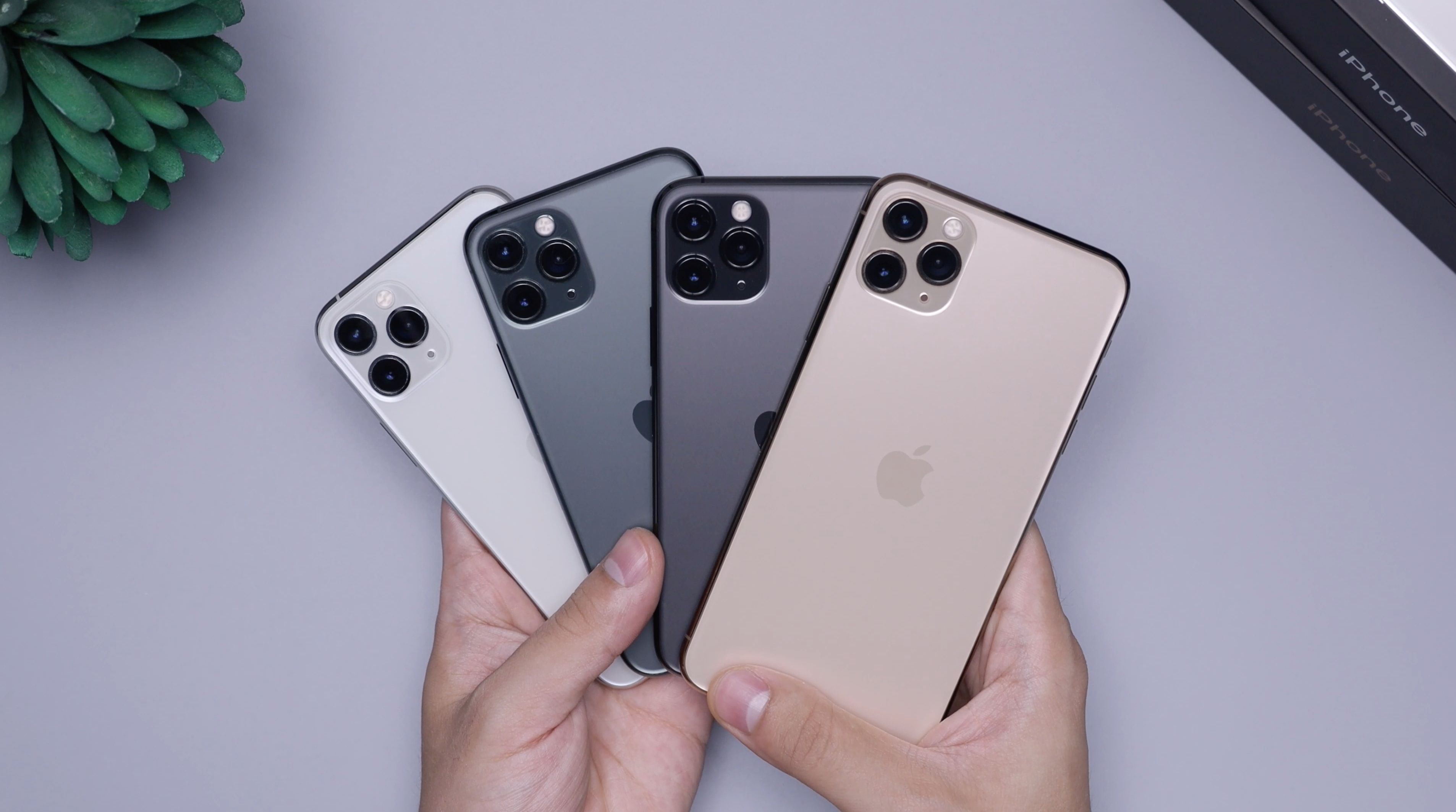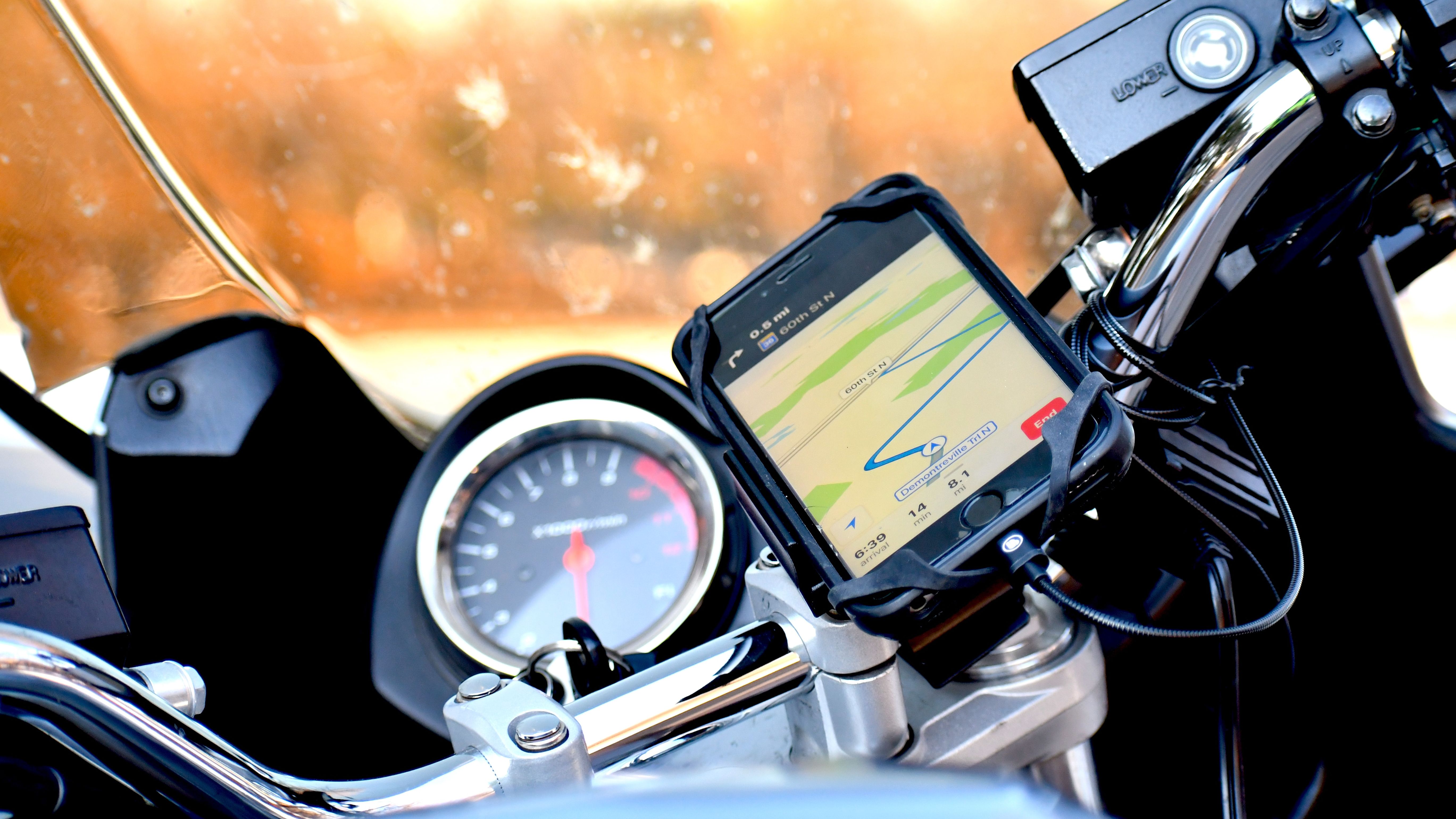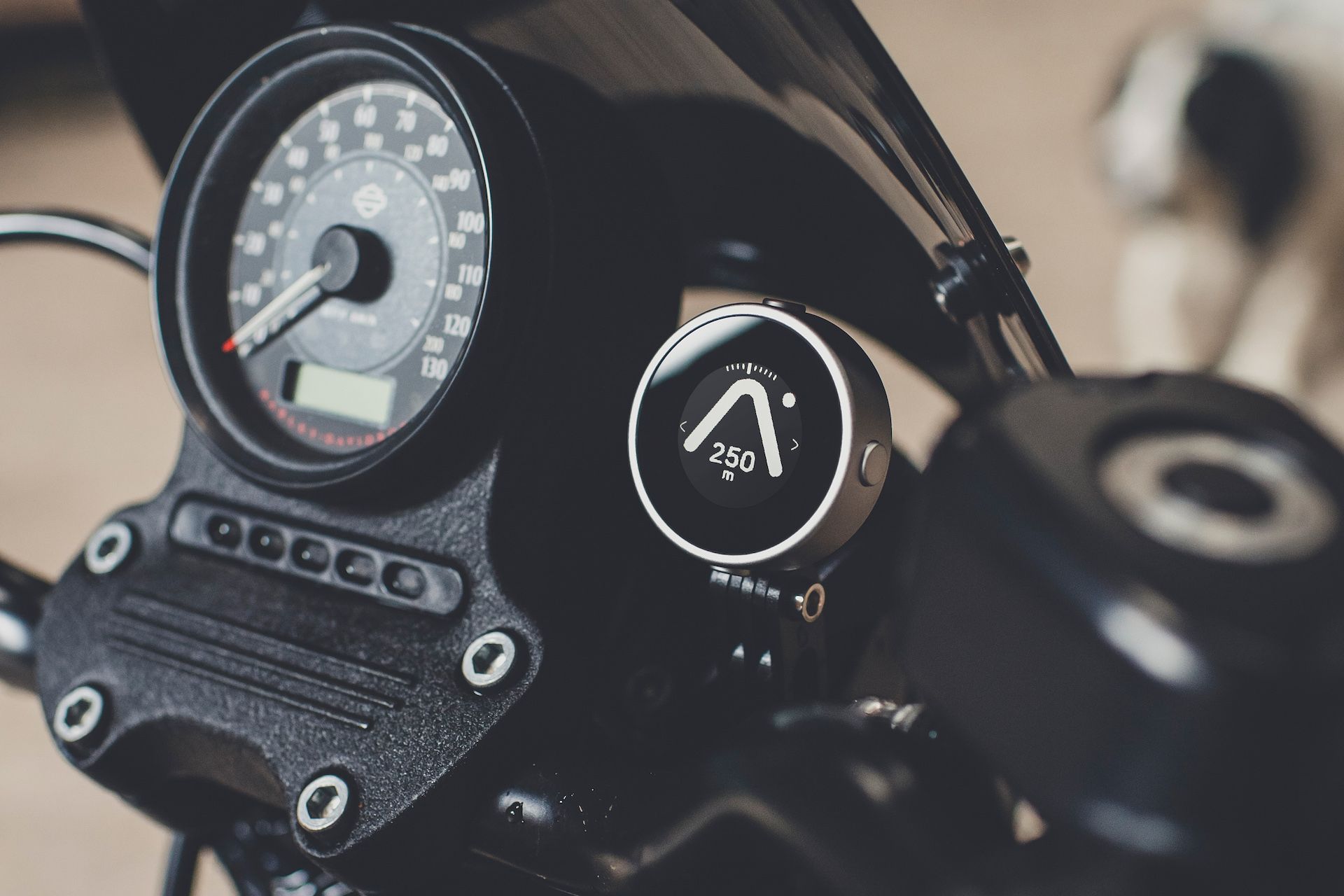Many motorcyclists spend their weekends exploring the local backroads in their region, which are often confusing to navigate. And for many bikers, especially those with a loose sense of direction, having a map right in front of their eyes comes in quite handy during their weekend endeavors, which is why many end up using phone mounts on their bike's handlebars. But navigation isn't the only reason bikers use phone mounts; some use it for music, others for attending important calls, and some just like to have it on the bike instead of on their person.
Regardless of the type of biker you are and why you want to mount your mobile phone to your bike's handlebar, it's time to reconsider your decision. You don't want to mount your mobile phone to the handlebar, especially if you have one of the recent iPhones or flagship Android phones with OIS and closed-loop AF features. We're not saying this; we're only conveying the message from Apple so you don't end up ruining your expensive phone's intricate camera.
Let's Get Some Context
In the past couple of years, many online forums have been flooded with iPhone (and some Android) users complaining about their phones' cameras not working properly after using motorcycle phone mounts. The most common complaint is that the phone's camera starts going crazy: it can no longer stabilize the footage or fails to focus on the subject, and a few unlucky users have also complained that their phones completely died after being on the handlebar phone mounts.
While this problem is common in Apple iPhone, Android users aren't spared. Some Android users have also faced similar issues with their phones after using motorcycle handlebar mounts. And usually, there's only one way to fix this problem in phones: toss it in the bin and get a new phone. Spoiler alert: the warranty won't cover this damage — double trouble. This is an expensive affair, especially if you like to use flagship phones. And let's be honest, a flagship phone without a functioning camera is worthless for many users.
Expert Opinions And Official Statements
Exposing your iPhone to high amplitude vibrations within certain frequency ranges, specifically those generated by high-power motorcycle engines, can degrade the performance of the camera system. — Apple Inc.
Forums like Reddit and IFIXIT are full of armchair experts that often give explanations that don't make sense, and that is what everyone thought was happening when these problems started popping up in the forums. Many experts pitched an explanation that excessive vibrations from the handlebars were causing phone cameras to go bad. Even some popular YouTube stars made a video on this issue, explaining why phone mounts could be the issue behind failing phones.
But on Sept. 10, 2021, Apple put everyone's speculations to rest and proved other experts right. According to Apple's support document, the high vibrations that iPhones experience while sitting on a phone mound can degrade the camera system's performance, especially all models after iPhone 7. So, the company advised users to not mount their iPhones on motorcycles, and if you still need to mount them for some reason, you shouldn't mount them for extended periods. You know a problem is serious when even Apple releases a statement about it. None of the Android manufacturers have addressed this concern yet, but Android users are facing this problem nonetheless.
The Physics Behind The Problem
Recent iPhones after the iPhone 7 and many other Android phones use a progressive camera system with closed-loop autofocus (AF) and optical image stabilization (OIS). AF helps the camera stay focussed on the subject even when the subject or the camera is non-stationary, and the OIS helps keep the footage stable and minimize the movement from hands or vibrations. These two features make your phone footage look so crisp and smooth.
So, how do these features go bad on high-end phones like iPhones? There's no denying that iPhones and other Android flagships are made with high-quality standards in mind, but the OIS and AF are fragile technologies. When they experience vibrations at a certain frequency, they get damaged and stop working as you'd expect them to. In fact, according to Apple, high-frequency vibrations are the primary reason cameras go bad on their phones, but phones aren't safe from low-frequency vibrations, either. So, whether you ride a high-powered Ducati Panigale V4R or a laid-back Harley Davidson Fat Boy, your phone is at risk of getting damaged if you use phone mounts.
Oh, and don't be under the assumption that the vibration dampeners that many new phone mounts come with make your phone safe. These rubber dampeners reduce the vibration by a margin but aren't nearly enough to make the mount vibration-free. Remember, your bike's engine probably has counter-balancers and vibration dampers on the engine mounts, handlebars, and even grips, and you still feel a slight buzz in your hand that gets more noticeable in certain rev ranges. If so much dampening can't fix the vibration, it would be foolish to think thin rubber dampers on phone mounts can.
SatNav And Intercoms As Viable Alternatives
Any iPhone launched after iPhone 7 and other recent flagship Android smartphones risk losing their camera (or their motherboard) when mounted on motorcycle phone mounts. And even a vibration-damping mount won't help save the cameras. In this case, the best option you're left with is to not use phone mounts on your motorcycle and to always keep your phone in your jacket's pocket. Sounds like a bummer, but that's the reality until phone manufacturers develop a vibration-safe tech. But there are better alternatives, depending on why you like having your phone mounted on the handlebar.
SatNav
You've got three roads you can choose from with SatNavs or GPS navigation devices. These devices are for those who like to have a map right in front of them at all times, lest they want to get lost at the next turn (it's okay, we're one of them, too), as they show you turn-by-turn navigation and all the other route information right on the main display. Plus, they are usually bigger than a phone and much more resilient to the extreme conditions of the road. Our recommendations:
- Garmin Zumo XT
- Garmin Zumo 396 LMT-S
- TomTom Rider 550
- Beeline Moto/Scooter GPS
Bluetooth-Enabled TFT Displays
If you're a bike that wants to enjoy ultimate connectivity while riding your motorcycle, right from music control to see who's calling you so early on a Sunday morning, you should go for a bike with a TFT display and Bluetooth connectivity. A Bluetooth-enabled TFT display combines some features of a SatNav with those of smartphones, coming up as an excellent sweet spot for most bikers. Of course, you'll have to get a new bike for it, but who said getting a new bike was a bad idea, anyway?
Intercom
The final option is a little basic and not at all visual — get an intercom for your helmet. You won't be able to see anything, but at least you can control some functions of your phone with the intercom controls, attend calls, listen to music, and get turn-by-turn directions. Get the right intercom, and you can even enjoy Siri/Google Assistant voice commands, a remote handlebar controller, or a built-in camera to record your rides. Our recommendations:
- Sena Spider ST1 Mesh Intercom Headset
- Cardo PackTalk Edge Headset
- Sena 10R Bluetooth Headset
- Sena 50C Harman Kardon Mesh Intercom and Camera
- Cardo KTM PackTalk Edge Headset




